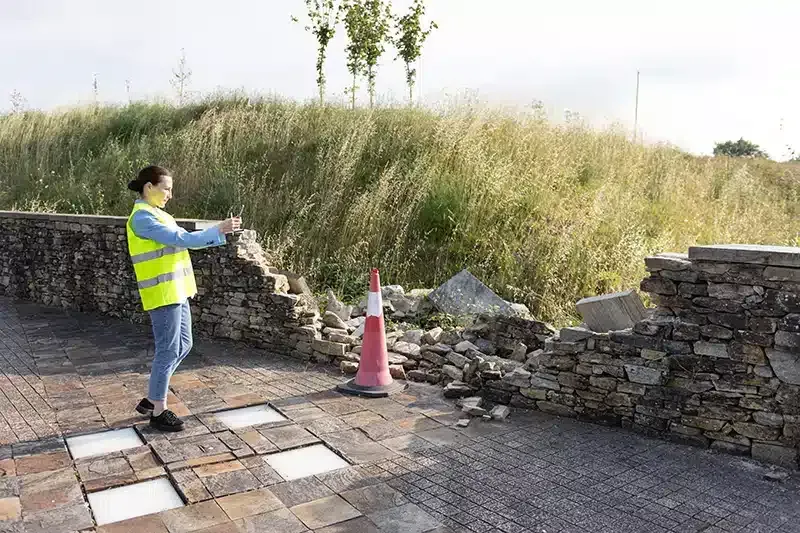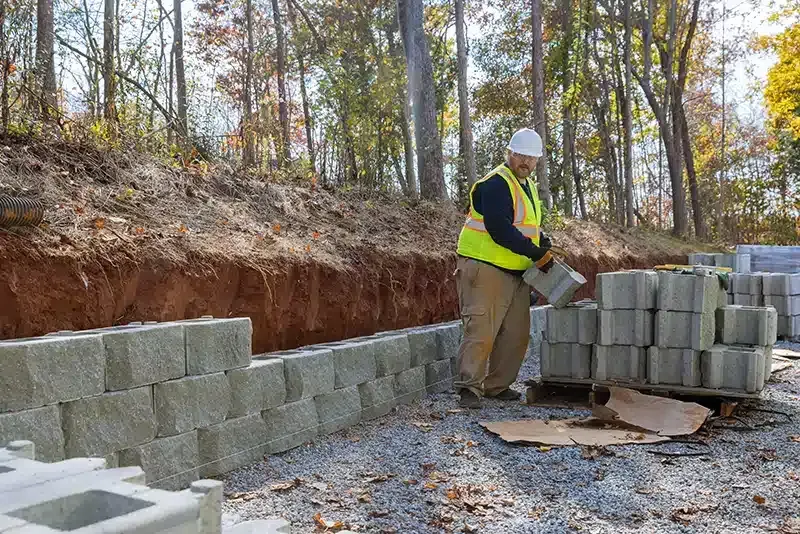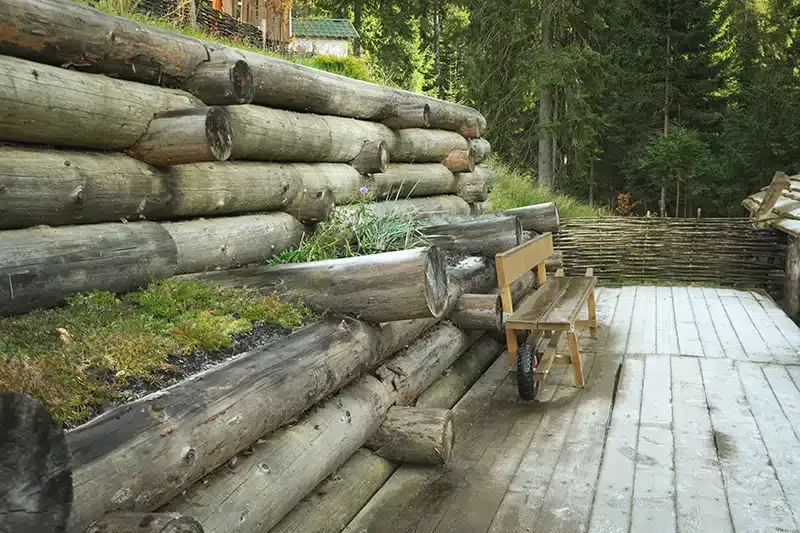How Can Wood Retaining Walls Increase Your Property Value?
If you're considering ways to enhance your property value, wood retaining walls might be worth your attention.
They not only serve a practical purpose by preventing soil erosion and managing water drainage but also add a certain aesthetic charm that can elevate your outdoor spaces.
Imagine how such improvements could appeal to potential buyers and impact your property's marketability.
Yet, the question remains: what specific benefits can these structures offer you in terms of investment and appeal?
Understanding the full scope of their value might just surprise you.
Functional Benefits of Wood Retaining Walls
Wood retaining walls aren't just about looks; they offer a range of practical advantages that can significantly improve your property's functionality.
Soil Erosion Prevention
Wood retaining walls are excellent at preventing soil erosion. For sloped yards, these walls keep soil in place, reducing the risk of runoff and protecting your landscape from damage.
- Reduce Runoff: Prevent soil loss with strategic wall placement.
- Protect Landscape: Keep your yard stable and intact.
Create Usable, Level Spaces
One of the standout benefits is the ability to level out uneven terrain, turning slopes into functional areas like gardens or patios. This maximizes your usable space, providing a solid foundation for outdoor activities.
- Level Areas: Transform sloped yards into flat zones.
- Maximize Space: Make the most of your property with functional zones.
Drainage Control
Wood retaining walls help direct water away from your home’s foundation, managing water flow and preventing potential damage. This helps avoid costly repairs related to water accumulation.
- Direct Water Flow: Keep water away from critical areas.
- Prevent Damage: Protect your property from water-related issues.
Privacy and Boundary Definition
These walls can also act as natural barriers that enhance privacy and define boundaries. Whether it’s creating secluded spaces or establishing clear property lines, wooden retaining walls offer versatility in design.
- Enhance Privacy: Create secluded areas within your yard.
- Define Boundaries: Mark your space with natural barriers.
Wood retaining walls not only add beauty to your outdoor space but also serve vital functional roles, improving both the safety and usability of your property.
Aesthetic Appeal and Curb Appeal
Wood retaining walls are an excellent way to elevate the visual appeal of your property, creating a warm and inviting atmosphere.
By incorporating wood into your landscape design, you add natural texture and charm that can transform your outdoor space.
Creating Elegant Focal Points
Wood retaining walls can be used to define areas like garden beds or level out sloped yards. These structures serve as focal points, complementing your home’s architecture and creating a balanced, aesthetically pleasing landscape.
- Define Garden Beds: Add structure to your garden with stylish walls.
- Level Sloped Yards: Use wood walls to create functional flat areas.
Blending with Nature
The natural beauty of wood allows it to seamlessly blend with other landscaping elements such as flowers and greenery. This versatility enables you to customize your design to reflect your personal style and enhance the overall character of your property.
- Versatile Design: Tailor the look to suit your style and landscape.
- Enhance Natural Beauty: Wood complements vibrant plants and lush greenery.
Boosting Curb Appeal
Well-designed wood retaining walls can improve your home’s curb appeal. When passersby notice a thoughtfully landscaped yard, it creates a lasting, positive impression, increasing your property’s appeal and perceived value.
- Lasting First Impressions: A welcoming landscape leaves a memorable mark.
- Increase Property Value: Enhance the overall charm and value of your home.
Wood retaining walls not only contribute to your property's beauty but also enhance its market value, making them a worthwhile investment for your outdoor space.
Impact on Property Marketability
A well-constructed wood retaining wall can significantly increase the appeal of your property, making it more attractive to potential buyers. Not only does it enhance the aesthetics of your yard, but it also offers practical benefits, such as preventing soil erosion and creating defined spaces for gardens or recreational areas.
Creating Defined Spaces
Wood retaining walls are ideal for structuring your outdoor space. By creating flat areas for gardens or patios, they showcase the potential for a functional and well-organized yard. Buyers are more likely to be drawn to a property that already has defined outdoor spaces ready for use.
- Prevent Soil Erosion: Protect your landscape from damage.
- Create Functional Zones: Designated spaces for gardens, patios, or play areas.
Enhancing Buyer Perception
A property featuring a wood retaining wall signals that the home has been well-maintained and thoughtfully designed. Potential buyers often see this as an indication of a property that requires less work, which can be a major selling point in a competitive market.
- Well-Maintained Property: Buyers appreciate attention to detail.
- Minimal Landscaping Work: A fully functional and attractive outdoor space.
Versatility for Diverse Preferences
The versatility of wood retaining walls makes them suitable for a wide range of buyer interests. Whether it's families looking for a safe outdoor play area or gardening enthusiasts wanting space for planting, these walls can meet various landscaping needs, appealing to a broader audience.
- Appeal to Families: Create a safe, functional play area.
- Cater to Garden Enthusiasts: Provide space for planting and gardening.
Incorporating a wood retaining wall into your landscaping not only increases the functionality of your outdoor space but also adds value to your home, making it a worthwhile investment to enhance both its appeal and marketability.
Wood retaining walls offer long-term durability when constructed with the right materials, techniques, and maintenance practices.
By selecting the appropriate wood, ensuring proper drainage, and anchoring the wall securely, you can create a stable, lasting structure.
Regular inspections, preservation treatments, and prompt repairs are key to maintaining the integrity of the wall, ensuring it continues to enhance your landscape for years.
With these efforts, wood retaining walls provide both beauty and strength, offering a sustainable and reliable solution for your outdoor space.


